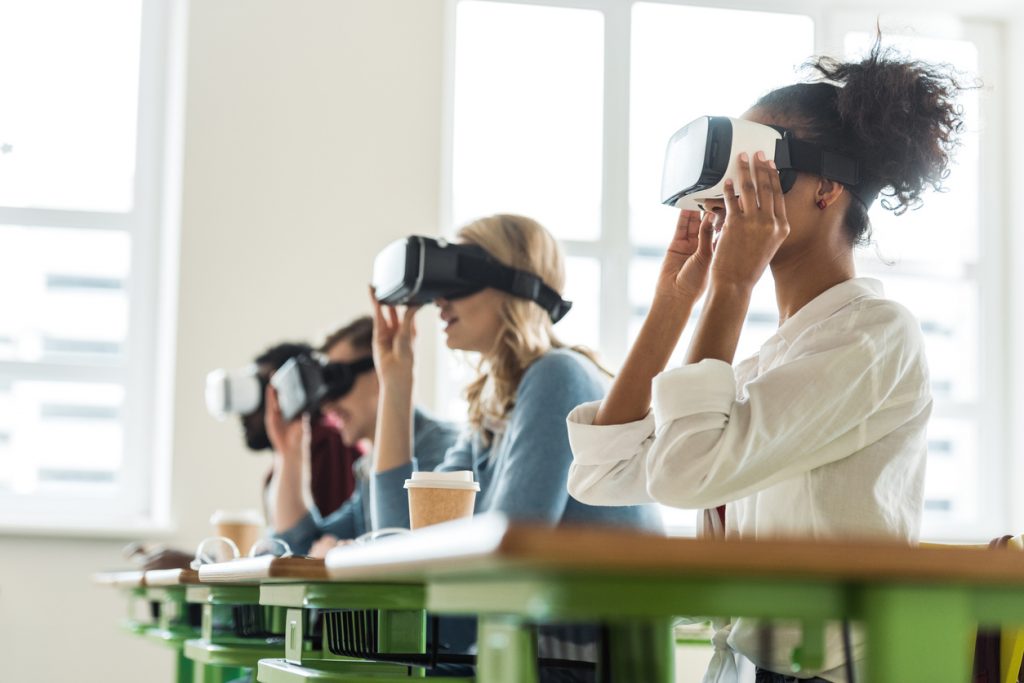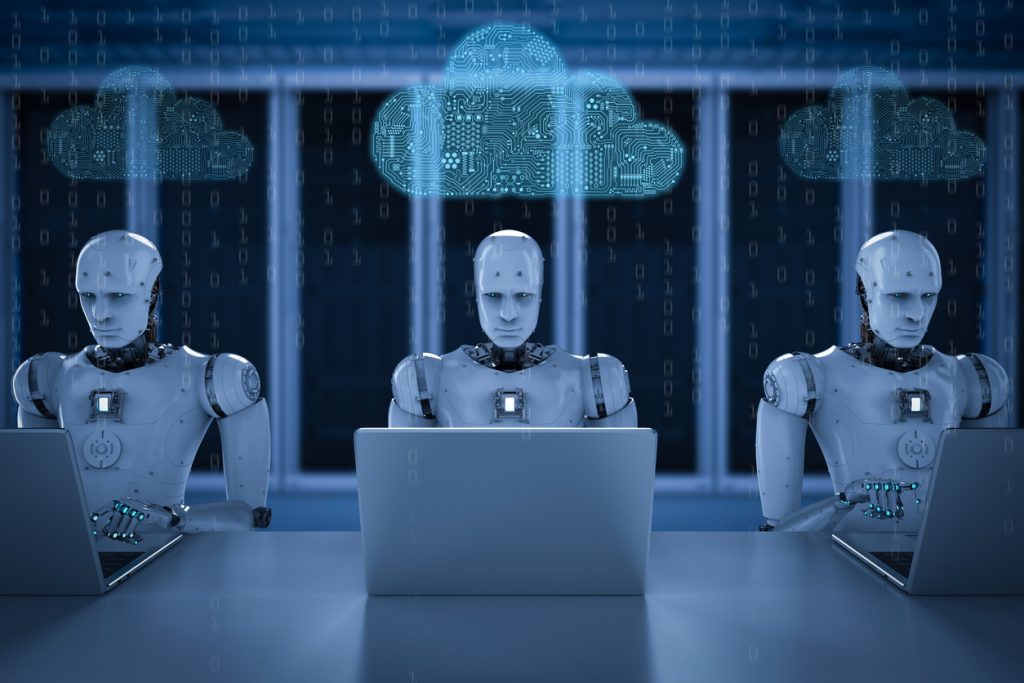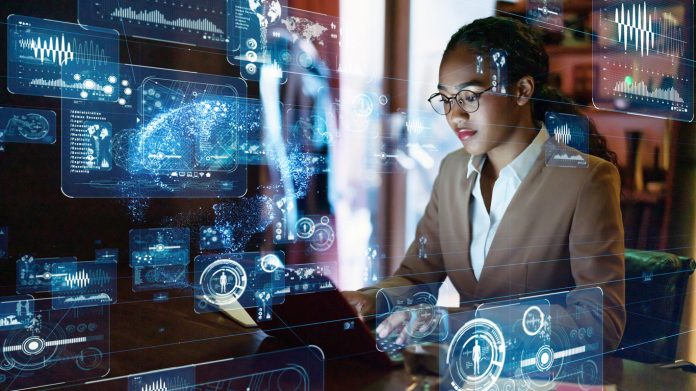The machine vision and imaging sector is a world in which technology is king. It’s a market that’s very diverse, and for several years now, it’s been growing at a rapid rate. Additionally, machine vision is responsible for improving safety in medicine, transport, and providing solutions for a wide variety of other industries. Therefore, machine vision capabilities, combined with advances such as robotics, artificial intelligence, the Internet of Things, and control technology, are having a significant impact on the industry and our daily lives.
Some people say machine vision is the upcoming leading force in the fourth industrial revolution. However, if you’re interested in what the future holds for you, your kids, and grandchildren, here’s a brief peek into some of the latest technology advancements in machine vision and innovative solutions soon to be available. Additionally, it might surprise you where it’s making an appearance.
What is Machine Vision?
Before we look at some of the latest developments, what technologies drive vision, and emerging technologies, let’s pause and define machine vision.
However, there are both industrial and non-industrial applications. Furthermore, machine vision combines both hardware and software. It is used to guide mechanical devices. The operational guidance provided is a result of images that have been captured and processed.
Facial Recognition
Facial recognition has taken considerable strides in the space of a few years. Thus, it can be used to pick out shoplifters, lost children, even international criminals. Realistically, nobody likes to think that someone is always watching them. However, there are times when such a system is priceless.
Facial recognition is a way of identifying and verifying a person’s identity using their face. A person’s facial details are captured, analyzed, and compared, using the latest technology. Therefore, facial recognition is considered to be a natural biometric measurement.
A 2D or 3D sensor is used to capture a person’s face. By transforming this image into digital data, an algorithm can be applied. The algorithm allows a comparison to be made with other images on file. Therefore, the features used for comparison include the bridge of the nose, the spacing of eyes, contour of lips, chin, and ears.
Because technology is so sensitive, it can pick out faces in the middle of a crowd of people. The general public is currently enjoying a peek into this technology in the form of the facial recognition software used in the iPhone X.
Virtual Reality
Virtual reality technology has advanced considerably in recent years. The virtual reality development world is one in which people can enter, walk through, and handle virtual objects. While VR has its obvious entertainment value, it can also be used in industrial settings. The architect and engineering sectors, in particular, are benefiting from VR technology innovation. Here are just a few examples:
- Unreal Engine – used by architects to visualize spaces and render architectural models. Engineers and architects who use this tool can design and build in a VR environment.
- Oculus Rift – any gamers reading this will have already heard about this headset. It does, however, have a more serious string to its bow. Using the AEC space, architects can quickly move around a 3D model, thereby getting a real glimpse of what a building will look like.
- Kinect – while its primary function has been connected with gaming, developers are spreading its field of usefulness into other more business-based applications. Using Kinect, customers can interact with products before they make a purchase.
- VRSCA – with the help of this powerhouse engine, as many as eight people can be connected through a virtual reality environment. Using this technology, architects and engineers can take clients on a virtual journey together.

Suggested Reading: How Much Does a Wedding Cost? 10 Ways to Cut Costs
Fully Autonomous Vehicles
Do you think we’re still decades away from fully autonomous cars? It may still be several years away, but with technology advancing as quickly as it has been, who’s to say it’s not just around the corner. There are plenty of examples already out there.
- New York City has a self-driving cars shuttle service
- Waymo One is Google’s Robo-taxi service
- Testing driverless lorries on building sites
- UK Chancellor, Philip Hammond, promised genuine driverless cars would be on UK roads by 2021
- Adaptive cruise control is already one of the many safety features on some new cars
Autonomous driving and automating vehicles may happen sooner than you think. In other words, it might not be long before there are autonomous cars at your local dealership.
The car manufacturing industry is also using machine vision technology to reduce the number of faulty vehicles appearing in the market. Sensing the tiniest of defects is now possible using a smart camera and a multi-vision camera. In short, transforming images into digital data allows image processing algorithms to pick out dents, slight color variations, scratches, and other safety-related defects. Therefore, automation has become a significant part of many manufacturing industries.
Another innovative technology worth mentioning here is night vision systems, like those used in Carl Zeiss Vision lenses for night time use.
Learn 10 Ways You Can Cut Your Wedding Costs
Intelligent Surveillance Systems
A 2015 New York Daily News article stated there were 17,000 cameras throughout New York City. No doubt, the number of cameras has increased significantly since then. CCTV and other video security and surveillance systems are used around the world in a variety of settings. These include commercial buildings, public areas, and civil infrastructures. Some of the latest technology trends in video surveillance systems and computer vision include:
Big Data Infrastructures
The storing and accessing of data is reaching new heights with the advent of state-of-the-art Big Data infrastructures. Consequently, there is wording used in the industry that refers to the 4Vs of Big Data: Volume, Velocity, Variety, and Veracity. These infrastructures are enabling technology companies to collect vast amounts of data from multiple cameras.
Data Streaming Systems
These are an essential part of Big Data infrastructures. Additionally, data streaming systems provide functionality for streaming analytics, streaming management, and Big Data analytics.
Predictive Analytics and Artificial Intelligence
The last few years have been momentous in the world of AI. Special teams are using AI to predict security incidents. Thanks to AI, security operators can predict when something is going to happen and be more proactive, rather than reactive.
Drones and the Internet of Things
The surveillance industry is using drones in many different areas. As a result, surveillance is far more functional and versatile than ever before.
Physical and Cybersecurity Measures
Technology has led to the convergence of cyber and physical security measures. Therefore, it’s now possible for a more holistic and integrated approach.

Read More: 10 Ways You Can Lower Your Cell Phone Bill Today
Artificial Intelligence (AI)
At the forefront of today’s revolution has to be Artificial Intelligence. For the last 20 years, it’s been improving year on year. Many of you will have watched the Will Smith blockbuster, AI, but what exactly is it?
What is AI?
AI is a branch in computer science. This branch deals with the intelligent behavior of machines. It refers to the simulated ability of a machine to imitate human behavior and our conventional responses. How do the machines do it? By using specific algorithms. That is to say, these algorithms instruct the device to do certain things, according to the codes. AI can now carry out many of your everyday activities.
People are using artificial intelligence in a wide variety of organizations, security frameworks, energy and natural resource management, governments, and many more places. Furthermore, deep learning and machine learning are methods based on artificial neural networks.
AI is already influencing your life in the following ways:
Chatbots
Chatbots are talkative machines you can find on social media feeds. Utility companies and online stores are two more places you can find them. Additionally, you can encounter them in banks, pizza delivery firms, and customer services.
Designing
Did you realize that many of the new components in your top-of-the-line automobile might have been designed using AI?
Football
Researchers are helping football managers predict crucial player decisions.
Controlling Traffic Jams
AI can analyze large amounts of information. Some cities are using it to keep traffic flowing smoothly. It does this by controlling traffic signals, predicting accidents, and potential traffic jams.
Fashion and Textile Design
Designers are using AI to design new textiles and fashion.
Predicting Illness and Disease
AI can spot patterns invisible to the human eye. Doctors and scientists are now using this ability to detect cancers, the early signs of eye disease, and whether a person is likely to suffer Alzheimer’s disease.
Catching Criminals
Police forces around the world are experimenting with AI. Facial recognition systems for identifying suspects is one example. The justice system is using AI to help decide whether a suspect should remain in custody or be released on bail.
Smart Homes
Have you invited Alexa into your home? This AI assistant is just one example of how AI is becoming a part of our lives. It’s also on your smartphone. AI can also be used to manage appliances and devices connected to a smart home network.
Managing Crops
Farmers are now using AI systems to help them manage their crops. It’s possible for an intelligent machine to move through a vineyard, for example, monitoring the vines, pruning, and removing fruit when ripe.
Caring for Wildlife
Using AI, rangers in East Africa can spot poachers. Rangers are also using AI to monitor endangered species.
Electronic Chefs
Next time you dine out, take a look behind the scenes. It might come to you as a surprise to see a robot taking over kitchen duties at your favorite diner.
Zoos
Technology and AI have even found their way into our zoos. Marwell Zoo, in the UK, for example, installed an experimental heating system because keepers worry about the Nyala antelope getting cold in the winter. The heating system uses infrared sensors and machine learning to keep the temperature just right.
LIDAR
LIDAR stands for Light Detection and Ranging. It’s a remote sensing method used for examining the Earth’s surface.
Summing it Up
Technology has become ingrained in our lives. It has its benefits, of course, but also a few downsides. Have you embraced technology in your life? Would you like to leave it all behind and live a much simpler life? Let us know what you think about technology and whether there’s anything you’d change. Take a few moments out of your day to leave a comment. Above all, we always enjoy reading what our visitors have to say.
Suggested Articles: 10 Ways You Can Lower Your Cell Phone Bill Today

